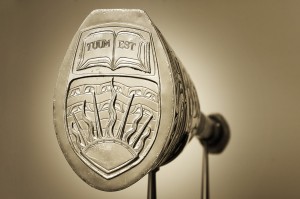Higher Racism: The Case of the University of British Columbia— On the Wrong Side of History but Right Side of Optics
Stephen Petrina & E. Wayne Ross
Here’s a summary of the article: UBC faculty, staff, and students commonly question senior managers’ assertions that “diversity is our strength.” If, counter to the cliche, diversity is not our strength, then what is it? This type of assertion may play well for a political audience but with insider knowledge, the reality is quite different. Insider knowledge is an effective antidote to confusions of audience and duplicitous speech. With this in mind, we analyzed UBC managers’ messaging and optics in matters of anti-Black racism. In conclusion, we don’t buy it and provide dozens of examples of where the rhetoric falls short of reality. We suggest that without action and real results, the optics seem insincere. Hence, senior managers are complicit in anti-Black racism at UBC.
Here’s the argument: What Robyn Maynard (2017) infers from history education practices in Canada sums up the case of UBC: “a discernable lack of awareness surrounding the widespread anti-Blackness that continues to hide in plain sight, obscured behind a nominal commitment to liberalism, multiculturalism and equality” (p. 30). Hence, in this case of UBC, we provide various examples of how the institution functions through racial bias and prejudice but argue that leaving the explanation to structural or systemic racism makes it too easy to deny elite individual and everyday racism, especially racist attitudes and decisions of the managers and their means of employment discrimination (i.e., blocking and undermining racial minorities’ access to career advancement and opportunities).
Here’s the conclusion: Anti-Black racism in higher education requires specific attention to history and action, whether affirmative or equitable. We argued that elite racism and everyday racism experienced by African ethnic and diasporic faculty, staff, and students and made visible through demographic data can no longer be dismissed or overlooked. Through the case of UBC, we demonstrated various ways in which the higher racism of managers works to maintain individual and systemic discrimination. Preferences of managers for image and optics over action— surface over substance— is especially shallow in this era of Black Lives Matter. We also raised questions of the logic of popular shortcuts to intersectionality (e.g., IBPOC) and stand with scholars explaining that therein, equity claims of African ethnic and diasporic faculty, staff, and students are readily deprioritized or marginalized. Code-switching has its limits. At UBC is an established record of defending middle and senior managers’ inequitable, and often enough for concern, racist, practices. Cases introduced by racial equity seeking individuals are routinely deferred, dismissed, or misdirected to external agencies, where again senior managers agitate to request dismissal of the complaints. Finally, we articulated concerns that managers are preferring to isolate and shield themselves from critical conversation and critique. Critics of problematic and racist practices risk disciplinary measures as managers grow increasingly intolerant of commentaries on mismanagement and whistleblowing.

 Follow
Follow

#UBC time to lay down the mace in graduation and governance #ubcnews #bced #highered
*Apologies to the medievalists again. Customized below is our semi-annual appeal to UBC managers to Lay Down the Mace:
As we count down to and roll through graduation, can we please remove the mace from convocation and governance at the University of British Columbia? The mace had its day in the first 100 years of this esteemed University but that day has gone.
Dalhousie University is currently embroiled in controversy over its mace, decorated as it is to demonstrate racial supremacy (“the rose, thistle, fieur-de-lys, and shamrock, depicting the major racial groups of our country”). Indigenous peoples and advocates have said enough already.
Some traditions just aren’t worth maintaining…
At the Nexo Knights’ Graduation Day,
Jestro grabbed a sword, a mace, and a spear and began to juggle them… The unimpressed crowd started to boo… Sweat broke out on his forehead…. He let go of the mace, and it flew across the arena. The crowd gasped and ducked… Then … bam! It hit the power grid on the arena wall. The area lights flickered, then turned off. Soon the power outage surged throughout the city.
Yes, this really did happen in a Lego story! And in England, Bradford College faculty members called the admin’s decision to spend £24,000 on a new mace for graduation ceremonies a “crass bit of judgement.”
At UBC, things were questionable again this past year. With an opportunity to follow faculty and staff members’ and students’ proposal to divest from fossil fuel investments, in mid February UBC chose to continue to be a part of the problem of climate change instead of the solution. Still heavily invested. And after chalking up a $22m budget surplus, in April & May UBC jumped the line at Wholefoods to draw $7,230 in grocery bag donations. On 24 April an Open Letter signed by 110 faculty members was submitted to the UBC Chancellor Reappointment Committee questioning the process.
The days of the mace in Convocation and governance are of the past and that part of the past is no longer worth reenacting.
It’s difficult to know where this University now stands or what it stands for.
It is time to retire the mace, symbol of aggression, authority, and war. It’s time to march to graduation ceremonies in late May and November with open and empty hands as symbolic of peace and reconciliation of controversies and roles of the President’s Office.
UBC’s mace is a relic but a relic of what? The mace is symbolic speech but what is it saying about us now?
From ancient times, this club, this weapon of assault and offence, the mace was gradually adorned until the late twelfth century when it doubled as a symbol of civil office. Queen Elizabeth I granted her royal mace to Oxford in 1589. From military and civil power derives academic authority. The rest is history and it is not all good.
Dr. Thomas Lemieux, School of Economics, with UBC’s Mace at the May 2015 Convocation.
It is time to retire the macebearer, whose importance is inflated every year by the image’s presence on UBC’s graduation pages leading to Convocation. In pragmatic terms, if the mace falls into the hands of the wrong macebearer or manager at this point, someone’s liable to get clocked with it.
Is UBC’s mace still a respectable appendage to Convocation?
Remember, since that fateful November day in 1997, just five months into Martha Piper’s Presidency, when student activists put their bodies and minds on the line at the APEC protest, Tuum Est adorns both the can of mace sprayed in their eyes and the ceremonial mace that the President’s Office is eager to carry across campus every November and May.
Is it not time to retire the mace?
Comments Off on #UBC time to lay down the mace in graduation and governance #ubcnews #bced #highered
Posted in Academic freedom, Academic Labor, Accountability, BC Education, Budgets, Commentary, Critical University Studies, Faculty, Governance, Maces, Shared governance, Students, Working conditions
Tagged Academic freedom, Faculty, Global Warming, Governance, Protests, Students, University presidents, Working conditions